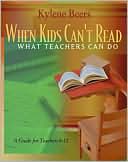Category Books
- Fiction Books & Literature
- Graphic Novels
- Horror
- Mystery & Crime
- Poetry
- Romance Books
- Science Fiction & Fantasy
- Thrillers
- Westerns
- Ages 0-2
- Ages 3-5
- Ages 6-8
- Ages 9-12
- Teens
- Children's Books
- African Americans
- Antiques & Collectibles
- Art, Architecture & Photography
- Bibles & Bible Studies
- Biography
- Business Books
- Christianity
- Computer Books & Technology Books
- Cookbooks, Food & Wine
- Crafts & Hobbies Books
- Education & Teaching
- Engineering
- Entertainment
- Foreign Languages
- Game Books
- Gay & Lesbian
- Health Books, Diet & Fitness Books
- History
- Home & Garden
- Humor Books
- Judaism & Judaica
- Law
- Medical Books
- New Age & Spirituality
- Nonfiction
- Parenting & Family
- Pets
- Philosophy
- Political Books & Current Events Books
- Psychology & Psychotherapy
- Reference
- Religion Books
- Science & Nature
- Self Improvement
- Sex & Relationships
- Social Sciences
- Sports & Adventure
- Study Guides & Test Prep
- Travel
- True Crime
- Weddings
- Women's Studies
When Kids Can't Read: What Teachers Can Do: A Guide for Teachers 6-12 » (1st Edition)

Authors: Kylene Beers, G. Kylene Beers
ISBN-13: 9780867095197, ISBN-10: 0867095199
Format: Paperback
Publisher: Heinemann
Date Published: October 2002
Edition: 1st Edition
Author Biography: Kylene Beers
Kylene Beers, a former middle school teacher, is Senior Reading Advisor to Secondary Schools with the Teachers College Reading and Writing Project, Columbia University. She is the author of When Kids Can't Read - What Teachers Can Do (Heinemann, 2002) and coeditor - with Robert Probst and Linda Rief - of Adolescent Literacy (Heinemann, 2007). A respected authority on struggling readers who works with elementary, middle school, and high school teachers across the nation, Kylene was recently elected Vice President of the National Council of Teachers of English to assume the presidency in 2008.
Book Synopsis
For Kylene Beers, the question of what to do when kids can't read surfaced abruptly in 1979 when she began teaching. That year, she discovered that some of the students in her seventh-grade language arts classes could pronounce all the words, but couldn't make any sense of the text. Others couldn't even pronounce the words. And that was the year she met a boy named George.
George couldn't read. When George's parents asked her to explain what their son's reading difficulties were and what she was going to do to help, Kylene, a secondary certified English teacher with no background in reading, realized she had little to offer the parents, even less to offer their son. That defining moment sent her on a twenty-three-year search for answers to that original question: how do we help middle and high schoolers who can't read?
Now in her critical and practical text When Kids Can't Read - What Teachers Can Do: A Guide for Teachers 6-12, Kylene shares what she has learned and shows teachers how to help struggling readers with
- comprehension
- vocabulary
- fluency
- word recognition
- motivation
KLIATT
Kylene Beers, a teacher with over 20 years of experience in the classroom, is an expert in the field of struggling readers. This guide for teachers for grades 6-12 is an excellent resource in helping teachers identify problems and in offering practical solutions. The underlying premise of her work is her belief that "first, teachers want to help the struggling readers who sit in their classrooms; second, those students want to be helped; and third, the right instruction can make a difference." The book is organized in a highly effective manner. There are a few chapters devoted to analyzing the process of reading and understanding what independent readers do effortlessly and what dependent readers need to learn to do. Several chapters deal with comprehension strategies. Other chapters deal with vocabulary, word recognition, fluency, automaticity, spelling, and finding the right books to use. Therefore, teachers who are looking for ways to help a student with a specific problem are easily able to locate a relevant section of the text. In addition to a sizable list of references for further study, there are 14 appendices covering almost 70 pages that should prove helpful to many. Among these are a list of common roots, prefixes and suffixes, a list of phonics generalizations, and a list of common spelling rules. Beers insists that simply telling struggling readers, "Just do it," is not acceptable: "We must show students how to do it." This is not solely the responsibility of a reading specialist. Beers equips all middle and secondary level teachers with specific strategies that work, and following her own advice, shows them how to use these strategies. Many chapters include a section called"Step Inside a Classroom" in which she presents transcripts of classroom dialogue between a teacher and a student to illustrate a certain technique such as helping students make inferences. Another strategy Beers uses is a section of "Questions and Answers" in which she tries to anticipate questions that teachers may have and provide responses. Additionally, there are a number of charts, forms, and illustrations that facilitate the teaching of a particular reading skill. For example, the form, "Most Important Word," is shown filled in by a student in response to a poem. This form is found in a reproducible format in an appendix. This guide is certain to provide teachers with a number of new approaches to reach the struggling reader. It challenges teachers to take more responsibility for making dependent readers independent. KLIATT Codes: P Recommended. 2003, Heinemann, 392p. illus. bibliog. index., Pucci
Table of Contents
Creating Independent Readers
Assessing Dependent Readers' Needs
Explicit Instruction in Comprehension
Helping Students Make Inferences
Frontloading Meaning: Pre-reading Activities
Constructing Meaning: During-Reading Activities
Extending Meaning: After-Reading Activities
Vocabulary
Fluency and Automaticity
Word Recognition
Spelling
Creating the Confidence to Respond
Finding the Right Book
A Final Letter to George Appendixes
Subjects

